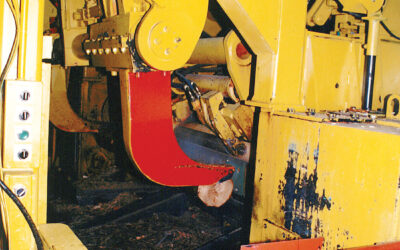OSU Predicts Log Prices
Researchers at Oregon State University have found a new way to predict the future price of logs that uses readily accessible economic information. “Log prices are really variable,” said Jeff Reimer, a professor of applied economics at Oregon State. “That makes this a difficult business, whether you are a land manager, mill owner, timberland investor or, as we are seeing now, a home builder.”
The health of the timber industry can be measured in various ways, including harvest levels, employment in timber harvesting and at mills, and lumber demand. Yet the prices of cut and delivered logs may be the most direct way to monitor the condition of timber markets, Reimer said.
Reimer’s study, recently published in the journal Forest Policy and Economics, focused on Douglas fir, the most commercially important timber species in the Pacific Northwest. He found that simply knowing the number of housing permits issued in a month can explain about 46.8% of the variation in log prices over time. Adding additional information—including the monthly inventory of homes, mortgage rates, the exchange rate with Canada (also a big timber supplier) and the Case-Shiller home price index—explains about three-fourths (74.3%) of the price variation.
“These variables are readily observable and thus can be used by industry decision-makers to make better predictions about future values of logs and timberland,” says Reimer, who cites data that shows the average price of Douglas fir logs between 2005 and 2020 was $631 per MBF in southern Oregon.
Yet this average disguises a great deal of variation in price. From 2005 to 2020, the price ranged from $346 per MBF to $924 per MBF. The difference between the minimum and maximum was $578, nearly as large as the 15-year average price itself. Since the paper was written, lumber prices have increased more, reaching the $1,000 per MBF range.
“Right now log prices are phenomenally high,” Reimer says. “It can feel like feast or famine in this industry but there is a logic that underlies the changes. The benefit of this paper is that we have identified a few pieces of readily observable information that allow people in the timber industry to make solid predictions about what will be happening in the next six months or so.”
Latest News
Roseburg Closes Weed Veneer Mill
Roseburg Closes Weed Veneer Mill Roseburg Forest Products has recently announced the closure of its veneer plant in Weed, Calif. The company is focusing on veneer production at its Oregon mills, where it has installed new veneer manufacturing equipment. The company...
WANT MORE CONTENT?
Spanning seven decades since its inception in 1952, Timber Harvesting highlights innovative and successful logging operations across the U.S. and around the world. Timber Harvesting also emphasizes new technology and provides the best marketing vehicle for the industry’s suppliers to reach the largest number of loggers in North America and beyond.
Call Us: 800.669.5613

